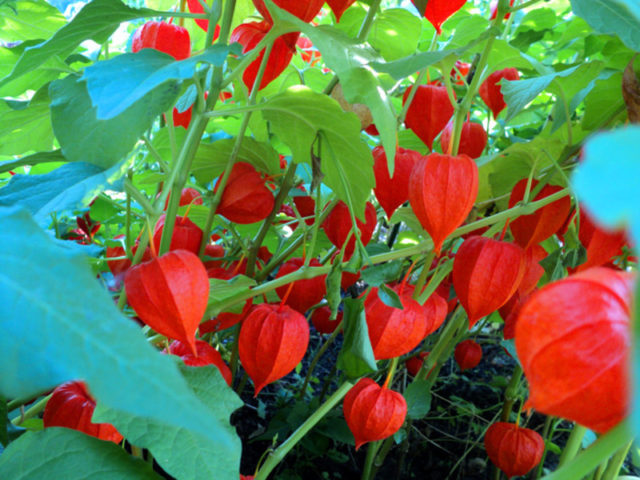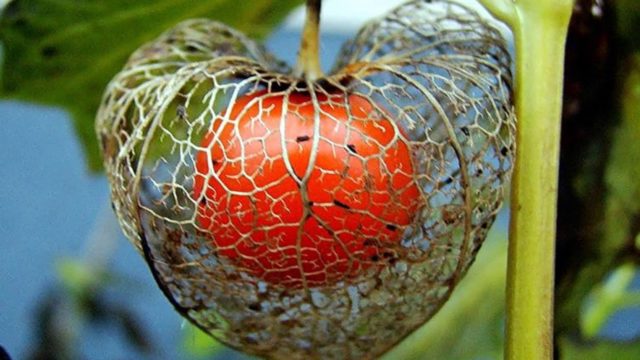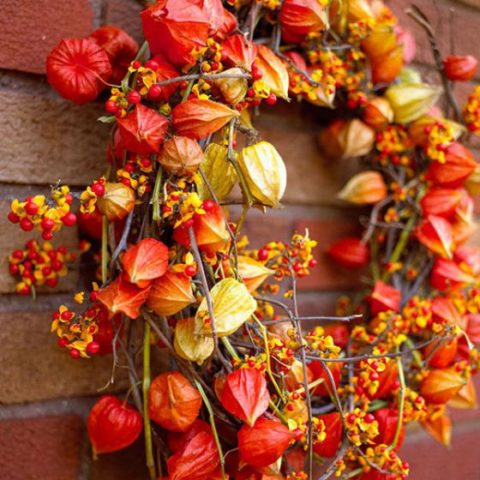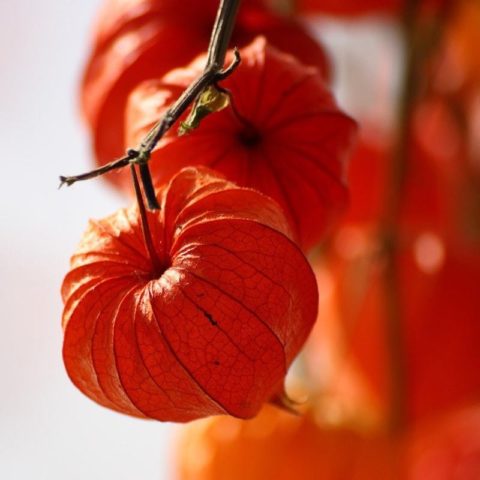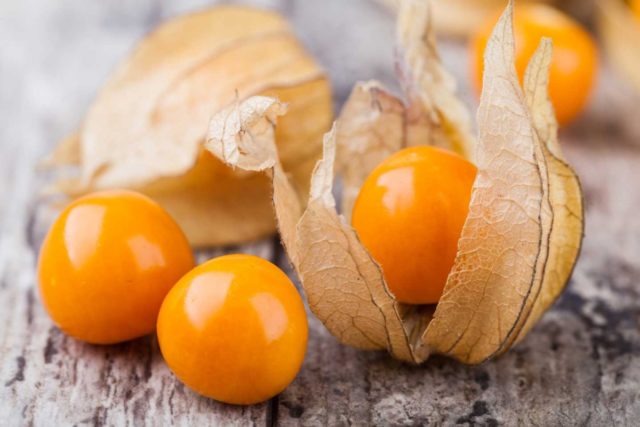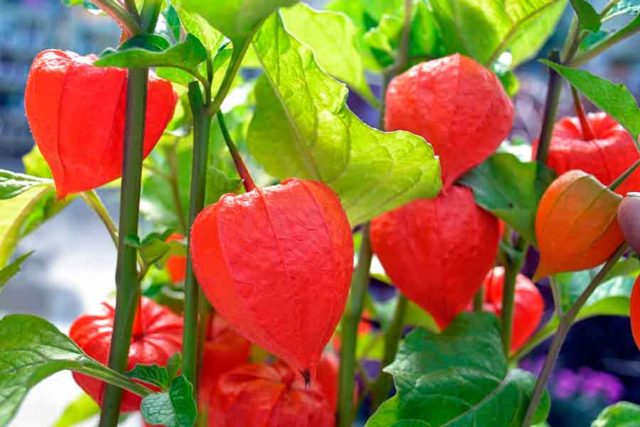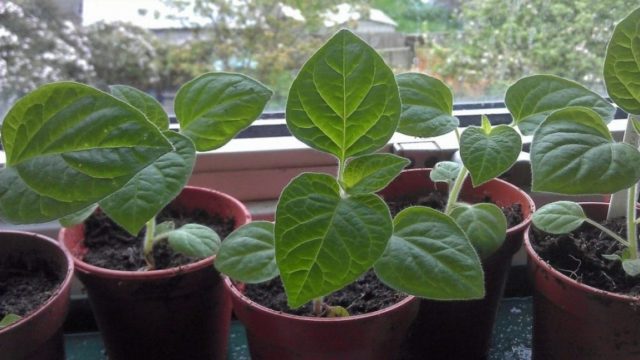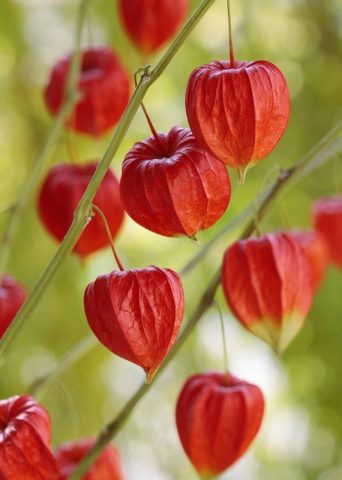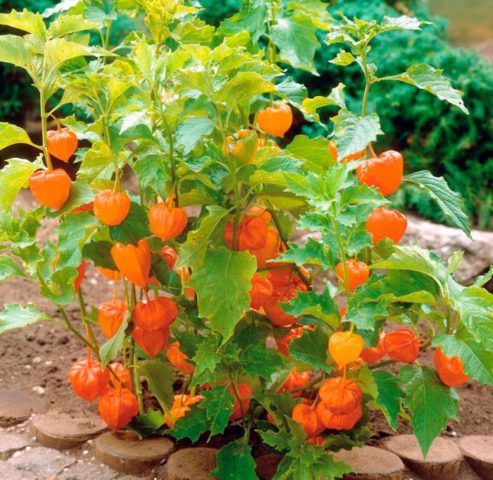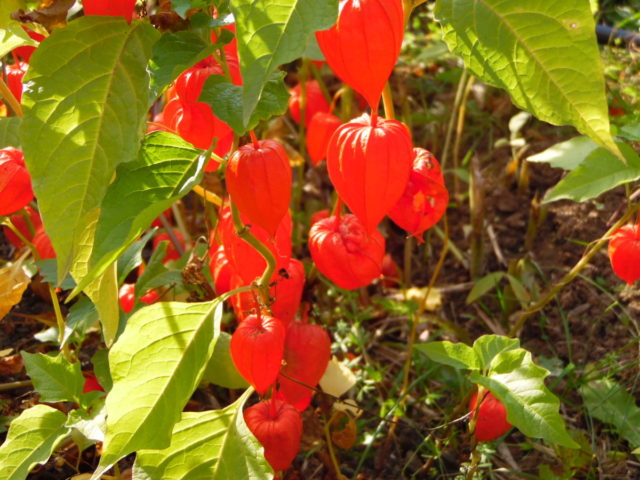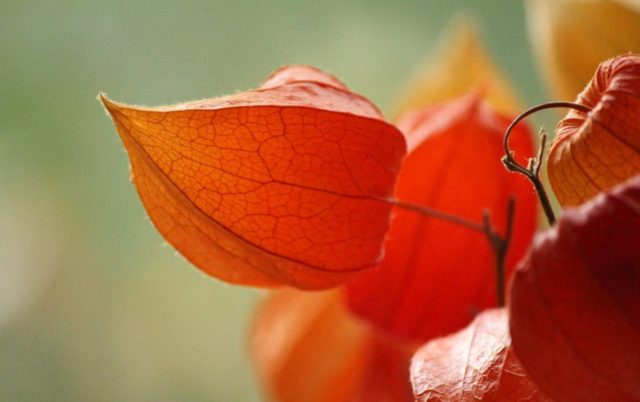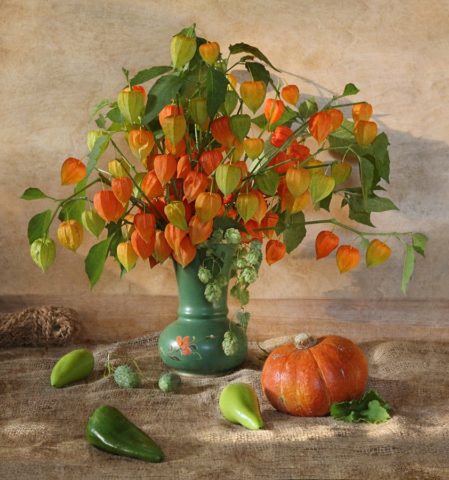Content
- 1 Physalis decorative in landscape design
- 2 Is it possible to eat decorative physalis
- 3 How to distinguish decorative from edible physalis
- 4 Growing and caring for decorative physalis
- 5 Diseases and pests
- 6 How decorative physalis reproduces
- 7 Fruiting
- 8 How to dry decorative physalis for a bouquet
- 9 Conclusion
Physalis decorative fruits at the moment of their full ripening attract special attention. They resemble magic lanterns from a fairy tale. It is not difficult to give yourself such a holiday in the garden - growing and caring for decorative physalis does not require special knowledge and work. It takes root well in any region of Russia.
Physalis decorative in landscape design
Ornamental physalis is grown by gardeners not for the sake of fruits - they are inedible, and not because of flowers, because they are small and inconspicuous. This plant attracts with the appearance of bright orange lantern fruits. Lanterns are especially delighted against the backdrop of a gray-and-white monochromatic Russian winter, decorating the empty gardens and backyard plots with their lights. Popularly, this plant has many names:
- Chinese lanterns;
- earthy cranberries;
- emerald berry;
- winter cherry.
Physalis has the ability to keep its fruit together with the cup for many months. If you leave the fruits intact on the bushes, then by spring you will get an elegant cup, woven from veins with a bright berry inside. Up to 15 lantern fruits can grow on one bush.
In landscape design, 2 types of decorative physalis are used:
- Physalis ordinary - perennial bush 30-60 cm high with fruit cups 3-4 cm in diameter.
- Physalis Franchet - grows up to 70-90 cm. Its red fruit-boxes have a diameter of 8-9 cm. It is grown as an annual.
Decorative physalis is good in composition with other bright flowers on the lawn or in a mixborder. The combination of physalis with lunaria, immortelle, gypsophila or kermek transforms the entire site, making it elegant.
Its dried branches with lanterns in bouquets of dried flowers, garlands, appliqués, create a feeling of celebration in any part of the house, both outside and inside, decorating the door, window, balcony.
Is it possible to eat decorative physalis
The cultivation of a decorative variety is only used for decoration. Its fruits are bitter in taste and contain a toxic substance - physaline. There is no scientific basis that Chinese lanterns are poisonous. You won't be able to get poisoned with one berry, but you can't eat them.
Among the many varieties of physalis, of which there are more than 100, there are edible ones, for example, vegetable or strawberry, which grows in South America and is called the "American tomato". They make preparations from edible varieties, like from tomatoes, cook jams and compotes, and eat them raw.
How to distinguish decorative from edible physalis
There are 2 main ways to distinguish decorative from edible physalis:
- In appearance... The fruits of the ornamental varieties are smaller and brighter than those of the edible varieties.
- Taste... The berries inside the fruit of the decorative physalis are covered with a film of a bitter substance. I don't want to eat them at all.
Edible berries should only be eaten when they are fully ripe. This can be understood by their appearance: when the fruit has become ripe, the cup begins to dry and bursts, revealing the berry.
Growing and caring for decorative physalis
The cultivated form of decorative physalis is a perennial plant.It tolerates frost, drafts, temperature changes well. Planting ornamental physalis and caring for it during growth and ripening include the same conditions as for tomatoes and peppers. The culture can multiply independently by seed. It is enough to plant this plant on your site once.
Landing dates
In different regions of Russia, the timing of planting decorative physalis will differ slightly. They depend on the time of the onset of heat. These terms can be calculated, knowing that the planted seedlings must stand 60 days before planting in the ground.
If the heat comes in early May, then seeds are planted for seedlings in early March. If the summer temperature is set at the end of May, then you need to take care of the seedlings at the end of March.
Planting seedlings in open ground is carried out provided that the frost has already passed, and the night temperature does not drop below +100FROM.
Growing decorative physalis from seeds
When choosing a place for growing physalis, you need to give preference to a sunny area with neutral or calcareous soil, the pH of which is less than 4.5. When planting seeds in the ground, some agrotechnical conditions must be observed:
- prepare the soil - dig up and, if necessary, apply organic fertilizers, but not fresh manure, the acidity of the earth can be reduced by adding wood ash;
- prepare seeds - hold for 20-30 minutes in a weak solution of potassium permanganate, rinse with running water, dry and leave for several days in a damp cloth, periodically moistening;
- when the seeds hatch a little, you need to plant them in prepared moist soil at a distance of about 30-40 cm from each other.
Soil temperature must be at least +50C, when frosts are no longer expected. If it is still cool during the day, then the area with the planted seeds should be covered with a film until shoots appear. Planting with seeds can also be carried out in the fall, deepening them by 2-3 cm and covering them with mulch.
Growing physalis decorative seedlings
The seedling method of growing decorative physalis is the most reliable in Russia due to its climatic conditions.
The procedure for planting seedlings is very simple:
- prepare seeds, keeping for some time in a solution of potassium permanganate;
- fill a plastic or wooden container with fertile soil;
- plant seeds to a depth of 1 cm, cover with foil and put in the shade for 3-4 days;
- remove the film, put the container with seedlings on the windowsill so that it receives light;
- when 2 leaves sprout on the sprout, each seedling is planted in a separate cup;
- all this time, the seedlings are periodically watered so that the ground is not dry.
The room temperature must be maintained within the range of +15 - +220C. Landing on the site is carried out in May, when the weather is warm. The plot is prepared as in the case of sowing seeds. Only for each seedling a hole is made up to 30 cm deep.
Physalis care
Physalis is frost and drought resistant. By its nature, this is a southern plant, therefore, for active growth and flowering, it needs full lighting. If the bush grows in the shade, then it will grow less fruit, and the color of the cups will not be very bright. Otherwise, the care is normal:
- water once a week, in dry weather - increase watering up to 2 times;
- periodically weeding and loosening;
- apply organic fertilizers a couple of times a month;
- mulch the soil under the bushes.
If you want to make the bush more straight, then you need to put a support and tie up the stems. When caring for a plant, heavily overgrown bushes can be cut off and pinched to form a certain form of decorative physalis.
No special care is required for the winter. The bush remains in the ground. The entire aerial part is cut off completely. You do not need to make a special shelter, but in case of a frosty and little snowy winter, you can mulch it with peat, dry grass or fallen leaves.
Diseases and pests
Physalis, in comparison with other plants, is unpretentious to external conditions and resistant to diseases. However, if he does not receive the necessary care, he becomes ill. This can happen due to poor lighting, high humidity, lack of nutrients during the cultivation of the crop. Most often physalis is sick with mosaic, late blight, white rot, black leg.
To combat insect pests - aphids, bears, wireworms, you will have to use appropriate insecticides.
How decorative physalis reproduces
The annual physalis can reproduce on its own, scattering ripe seeds that will germinate the next year. Gardeners use its seeds for cultivation, planting them in March-April for seedlings, and in May - in open ground.
It is better to propagate a perennial species by dividing the bush. This is done in the spring, when new branches begin to sprout from the root. They need to be carefully separated and dropped off elsewhere.
Fruiting
Ornamental physalis blooms almost all summer, and only at the end of August, fruits in capsules begin to form. The color of the capsule changes as the berry ripens. At the end of September it reaches full maturity and the calyx takes on its final color.
How to dry decorative physalis for a bouquet
After the fruit is finally ripe, the entire upper part of the perennial decorative variety is cut off, leaving the roots in the ground. The leaves are removed, leaving the stems and cups with fruits, which are hung to dry in a ventilated room without direct sunlight.
If the branches will be used to compose compositions with other elements, then they must be dried separately. If you want to create a bouquet only from physalis fruits, you need to immediately collect them in the desired form, tie and hang for drying.
Conclusion
Growing and caring for decorative physalis does not present any particular difficulties. It is not difficult to plant this plant in your garden. It requires no more attention to itself than any varieties of the Solanaceae family. To fully admire its fruits, you only need to show the imagination of the designer.
https://www.youtube.com/watch?time_continue=56&v=_S8yhk7gntc

